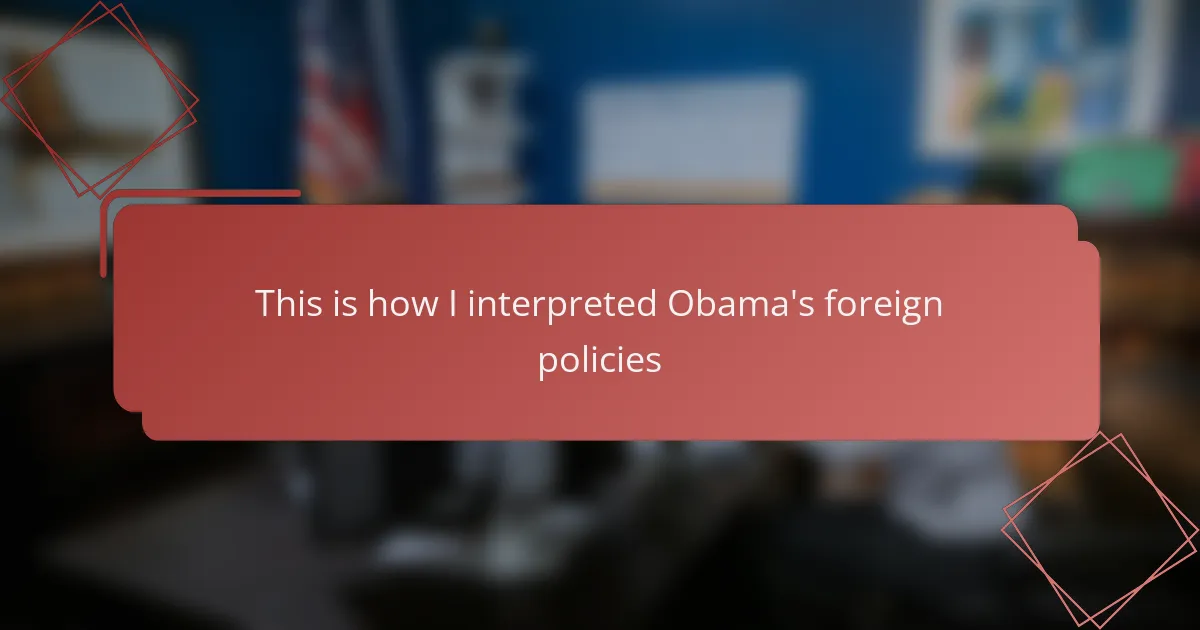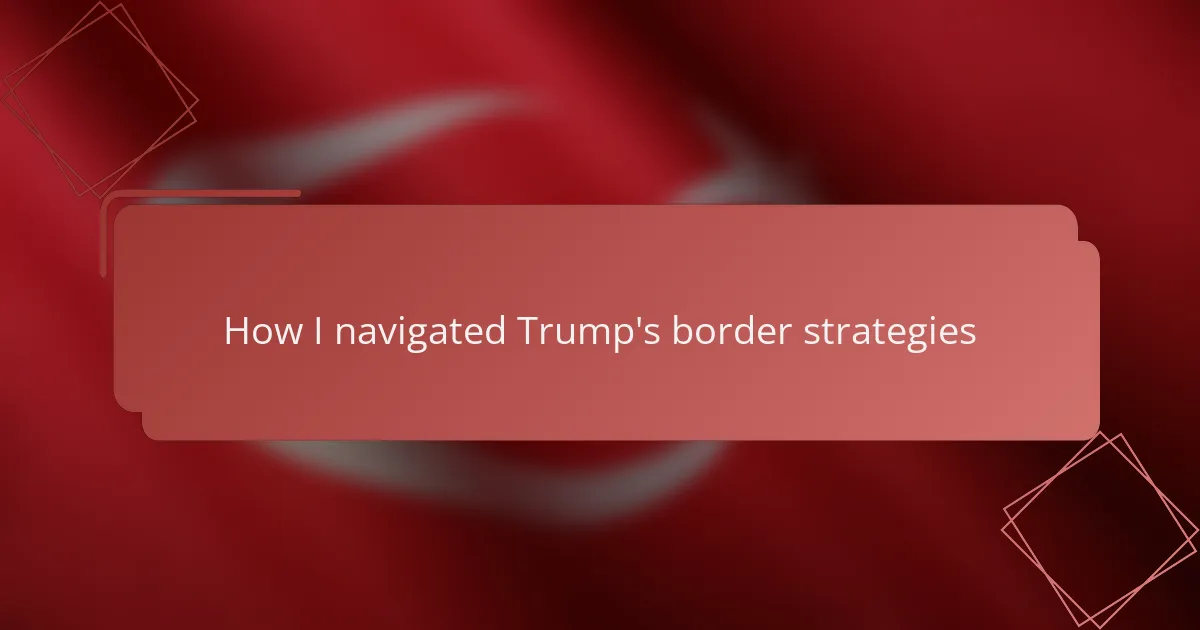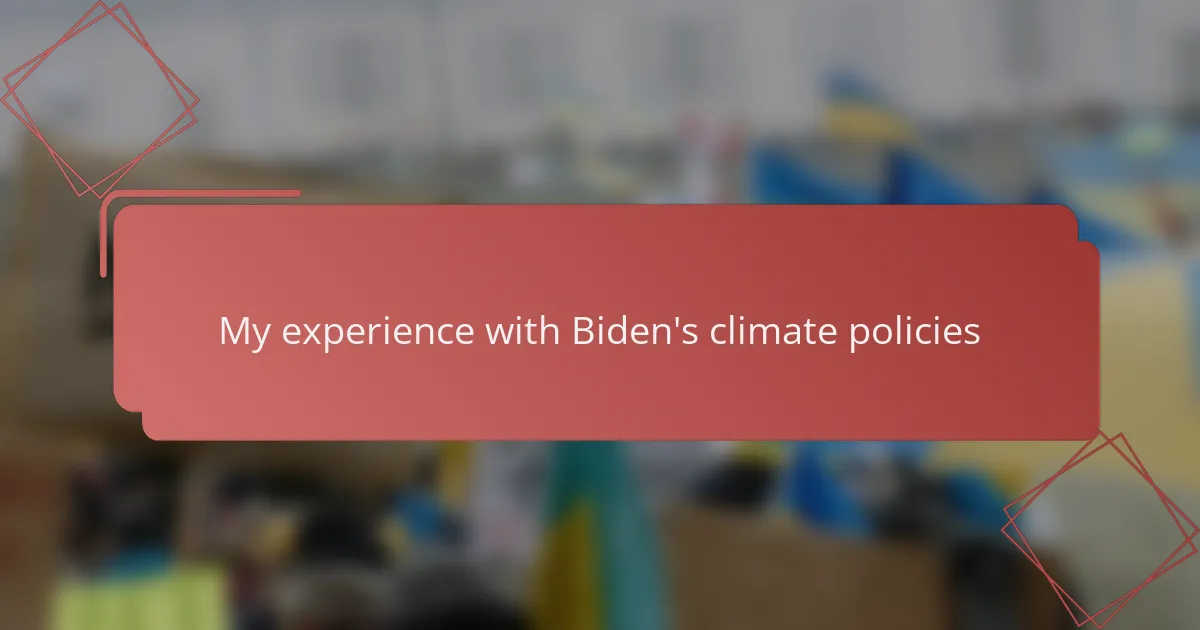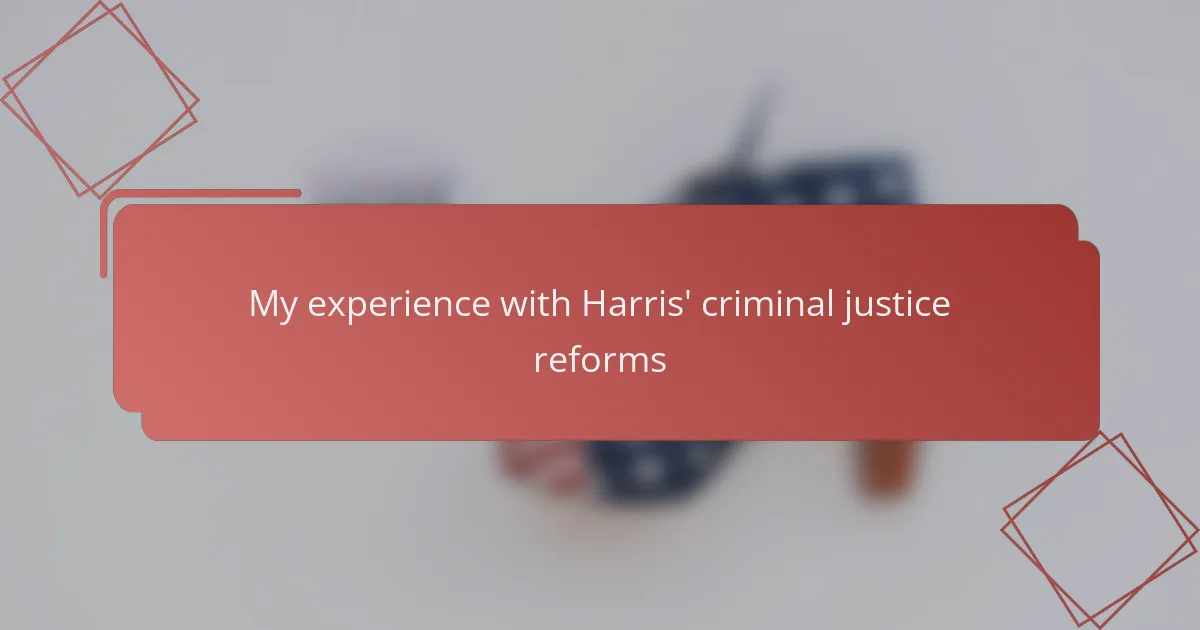Key takeaways
- Political satire uses humor to highlight the contradictions and complexities of political actions, encouraging deeper reflection on public narratives.
- Obama’s foreign policies are characterized by diplomacy, multilateralism, and a cautious approach to military engagement, blending idealism with pragmatism.
- Key techniques in political satire include irony, exaggeration, and juxtaposition, which help uncover hidden truths about political figures and policies.
- Satire not only critiques foreign policy but also makes complex geopolitical issues relatable, emphasizing the human challenges behind political decisions.
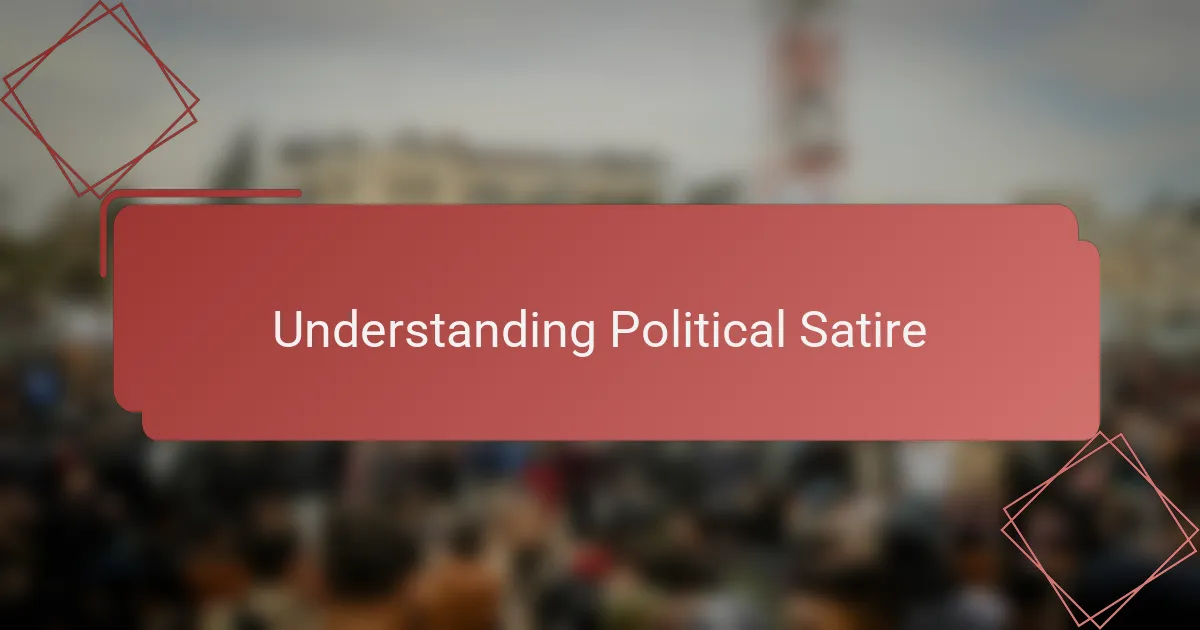
Understanding Political Satire
Political satire is a fascinating tool that uses humor and exaggeration to reveal the truth behind political actions. When I first encountered satire about Obama’s foreign policies, I realized it wasn’t just about mocking leaders but about highlighting the complexities and contradictions that official statements often mask. It made me think deeply about how public perception is shaped not just by facts but by the stories we tell through humor.
| Political Satire | Traditional Political Analysis |
|---|---|
| Uses humor, irony, and exaggeration | Focuses on factual, straightforward evaluation |
| Highlights contradictions and hidden truths | Emphasizes policy outcomes and statistics |
| Engages emotions and critical thinking through storytelling | Appeals primarily to logic and evidence-based discussion |

Overview of Obama’s Foreign Policies
Obama’s foreign policies struck me as a blend of idealism and pragmatism, trying to balance global leadership with cautious engagement. From my perspective, his approach seemed to emphasize diplomacy first, even when the world screamed for a more forceful response. I remember debating with friends how his reluctance to unleash military force sometimes felt like missed opportunities, yet also a necessary restraint in a post-Iraq-war era.
Looking at the details, Obama’s policies revolved around key priorities: revitalizing American diplomacy, promoting multilateralism, and avoiding large-scale conflicts whenever possible. Here’s how I interpreted his main foreign policy moves:
- Re-engagement with Cuba, signaling a shift toward reconciliation
- The Iran Nuclear Deal, aimed at preventing nuclear proliferation through diplomacy
- The pivot to Asia, highlighting economic and strategic interests in the Pacific
- Strategic counterterrorism missions, favoring targeted strikes over prolonged wars
- Support for NATO allies while cautiously managing relations with Russia
- Emphasis on climate change as a global security issue, integrating environmental concerns into foreign policy
These points, to me, reveal a leader navigating a complex and often contradictory global landscape, trying to do good without overextending America’s commitments.
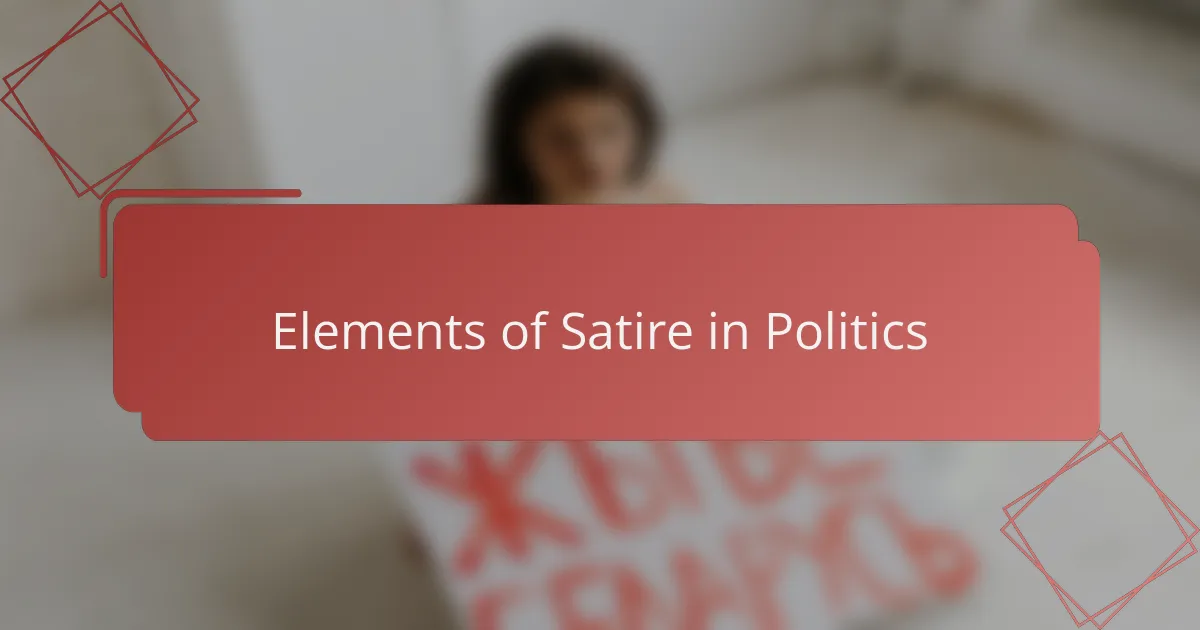
Elements of Satire in Politics
Satire in politics often thrives on exaggerating the quirks and contradictions of political figures, and that’s what makes it so sharp and insightful. I’ve noticed that it doesn’t just poke fun—it forces us to question the polished narratives politicians put forward. Have you ever caught yourself laughing at a satirical piece, then pausing to wonder if there’s a deeper truth beneath the humor? That’s the power of well-crafted satire.
What I find most compelling about political satire is its use of irony and sarcasm, which act like mirrors showing us the gap between what politicians say and what actually happens. In my experience, this contrast can highlight hypocrisy or unintended consequences in a way that formal analysis rarely does. It’s almost like satire lets us see backstage, behind the curtains of diplomacy and official speeches.
Another element worth mentioning is the emotional punch satire delivers. It appeals to our frustrations, hopes, and doubts about politics by turning complex policies into accessible stories. I remember reading a satirical take on a foreign policy blunder that made me chuckle but also reflect on the real human costs involved. Isn’t that exactly what makes satire such a unique tool for political critique?
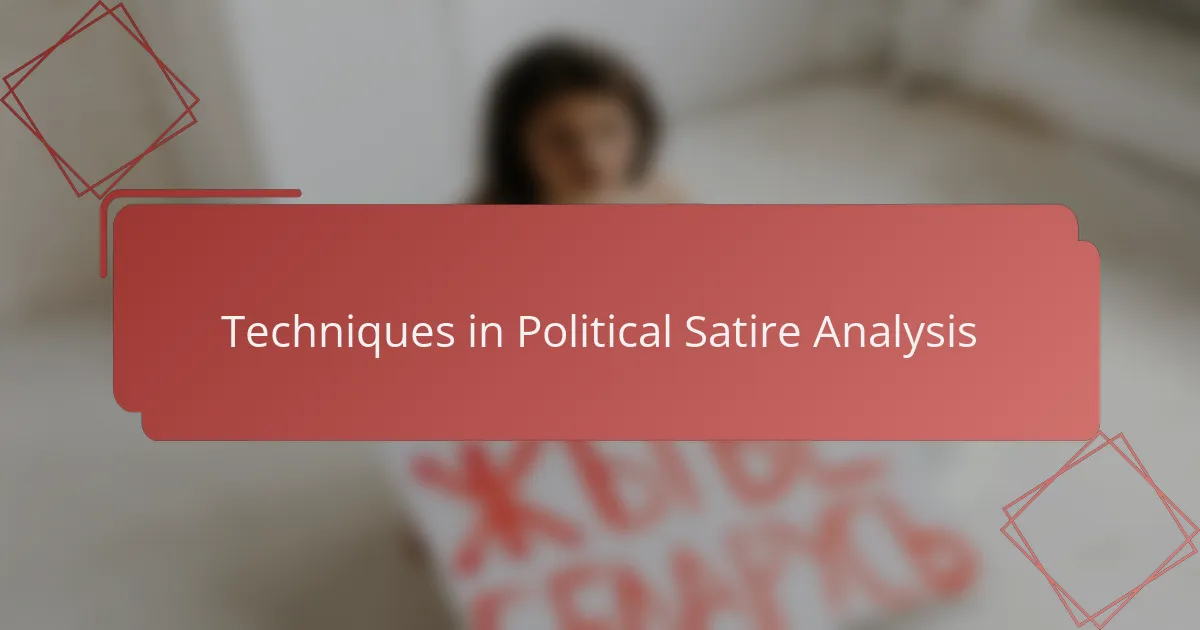
Techniques in Political Satire Analysis
When I dive into political satire analysis, especially regarding Obama’s foreign policies, I find that recognizing the use of irony and exaggeration is key. These techniques often reveal the underlying critiques masked by humor, making complex political strategies more accessible and thought-provoking.
From my experience, satire doesn’t just entertain; it sharpens our perception of political narratives by highlighting contradictions and absurdities. Here are some crucial techniques I look for:
- Irony: Pointing out the gap between Obama’s diplomatic ideals and the real-world outcomes.
- Exaggeration: Amplifying events like drone strikes or international negotiations to expose their flaws.
- Parody: Mimicking political speeches or actions to reveal inconsistencies or hidden motives.
- Juxtaposition: Contrasting Obama’s rhetoric of hope with controversial foreign interventions.
- Symbolism: Using recognizable images or phrases associated with Obama to deepen the satire’s impact.
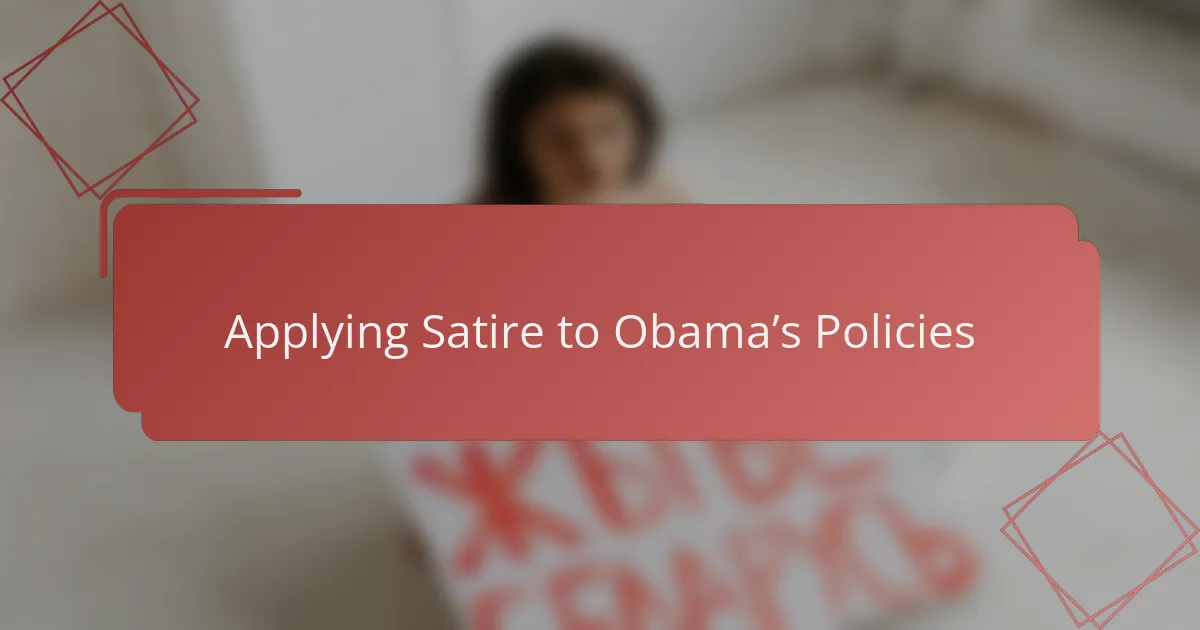
Applying Satire to Obama’s Policies
Applying satire to Obama’s foreign policies, I often found myself drawn to how humor peeled back layers of diplomatic politeness. Satire seemed to underline the friction between Obama’s hopeful rhetoric and the sometimes messy reality of targeted drone strikes or cautious alliances. Have you noticed how these satirical takes can make you question what’s left unsaid behind the official speeches?
What strikes me is that satire doesn’t just lampoon foreign policy missteps; it also captures the contradictions inherent in Obama’s balance of idealism and pragmatism. For example, I recall a satirical cartoon exaggerating the “pivot to Asia” as a game of global chess, where the pawns look confused—an image that made me laugh but also think about the strategic complexity and uncertainty behind that policy. Isn’t that dual nature of satire what makes it so effective in political analysis?
Finally, what I appreciate most is satire’s ability to humanize these vast geopolitical moves. Through irony and caricature, it brings the abstract down to a relatable level. I remember reading a satirical sketch imagining Obama trying to negotiate peace while juggling flaming torches labeled “Middle East,” “Russia,” and “Climate Change.” The humor captured the overwhelming challenge he faced, making me reflect on just how nuanced and tough foreign policy truly is.

Personal Interpretation of Satirical Messages
Satirical messages often strike me as a kind of conversational spark that invites me to look beyond the surface. I find myself asking, “What is this really saying about Obama’s foreign policies?” and then noticing how humor distills frustration, admiration, or skepticism into a few clever lines or images. That personal moment of connection is where satire feels most alive to me.
Sometimes, I catch myself chuckling at a satirical jab and then pausing to reflect on the tension it exposes between stated ideals and actual policy outcomes. It’s like satire creates little epiphanies—unexpected insights that wouldn’t emerge through straightforward political commentary. Have you ever experienced that sudden shift from laughter to serious thought? That’s exactly what I interpret as satire’s unique power.
What I’ve learned is that interpreting satire demands both openness and skepticism. It’s tempting to take the humor at face value, but the richer experience comes when I dig into what’s being critiqued beneath the jokes. For example, a sarcastic take on the Iran Nuclear Deal made me reconsider not just the policy’s flaws, but also the broader challenges of diplomacy in a polarized world. To me, that layered understanding transforms satire from mere entertainment into a meaningful political lens.
